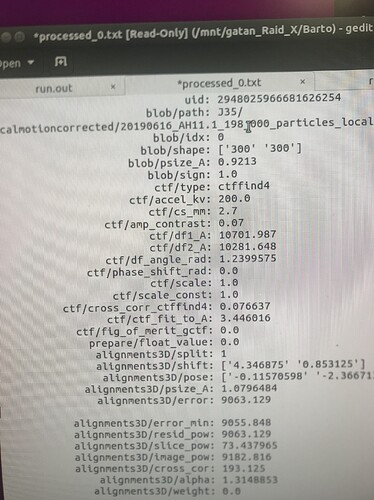Hi all,
I was able to extract/open the metadata contained in the particles.cs file of my homogenous refinement. Does anyone know what the following headers mean?
alignments3D: error, error_min, resid_pow, image_pow, cross_cor
I know Relion outputs headers for Refine3D particles. Are any of the above parameters similar to Relion’s LogLikeliContribution parameter? Thanks!
Go ahead and read the code for csparc2star.py on my github, you can figure out what the headers mean. Phi represents probabilities (e.g. class membership), cross_cor is I think the cross correlation in projection matching, and so forth. The log likelihood contribution is a post factor measure of the contribution, I imagine the cross correlation will work better as a score for rejecting particles if that’s what you want to do.
Hey Daniel, thanks for the advice! I noticed that your GitHub code has “none” next to the parameters I mentioned above. These are the outputs for Cryosparc_Pxx_Jxx_00x_particles.cs. Because per-image indicators can help filter out bad images in Relion, I wondered if any of these parameters could be used for the same purpose.
I believe image_pow and cross_corr are likely to be the most useful for filtering. I’m not sure but I imagine the former is the DC component of the particle power spectrum and the latter is a straightforward cross-correlation from projection matching or a related probability based measure of similarity. The first thing I would try is a 2D scatter plot of the cross_corr vs. image_pow.
In my experience, no number from Relion is useful for filtering. I think it’s because the NrSignificantSamples and MaxValueProbDistribution are somewhat indirect, and the LogLikeliContribution is a post-facto measure based on the final map so doesn’t necessarily scale as expected with the “goodness” of a particle. For me, the distributions of the Relion numbers all tend to be unimodal and long-tailed. In contrast, the score used by Frealign and cisTEM seems to work quite well. The distribution is usually bimodal and easily split into “good” and “bad” particles.

